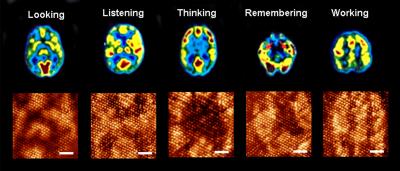Researchers develop new brain-like molecular processor

An international research team from Japan and Michigan Technological University have demonstrated a molecular circuit that can evolve continuously to solve complex problems that challenge today's supercomputers.
The massively parallel circuit contains a layer of molecular switches (monolayer) that simultaneously interact in a manner similar to the information processing performed by the neurons in the human brain. That is, they can evolve to tackle complex problems. Information processing circuits in digital computers, in contrast, are static, and operate serially. The abstract of a paper published Nature Physics, "Massively parallel computing on an organic molecular layer," explains:
"Modern computers operate at enormous speeds—capable of executing in excess of 10^13 instructions per second—but their sequential approach to processing, by which logical operations are performed one after another, has remained unchanged since the 1950s. In contrast, although individual neurons of the human brain fire at around just 10^3 times per second, the simultaneous collective action of millions of neurons enables them to complete certain tasks more efficiently than even the fastest supercomputer."
In the top half of the image above, you can see magnetic resonance images of the human brain during different functions. Below that, you can see similar evolving patterns have been generated on the molecular monolayer one after another. A snapshot of the evolving pattern for a particular brain function is captured using Scanning Tunneling Microscope at 0.68 V tip bias (scale bar is 6 nm).
The molecular processor can also heal itself if there is a defect because of the self-organizing ability of the molecular monolayer. Like the brain, if a neuron dies, another neuron takes over its function.
To prove that the parallel, dynamically reconfigurable processor works as claimed, the researchers have mimicked two natural phenomena in the molecular layer: heat diffusion and the evolution of cancer cells.
The research was carried out by a team that includes Ranjit Pati, of the Michigan Technological University Department of Physics and Anirban Bandyopadhyay, National Institute for Materials Science, National Institute of Information and Communication Technology, Japan.
Related reading:
The amazing memristor - beyond Moore's law and beyond digital computing
